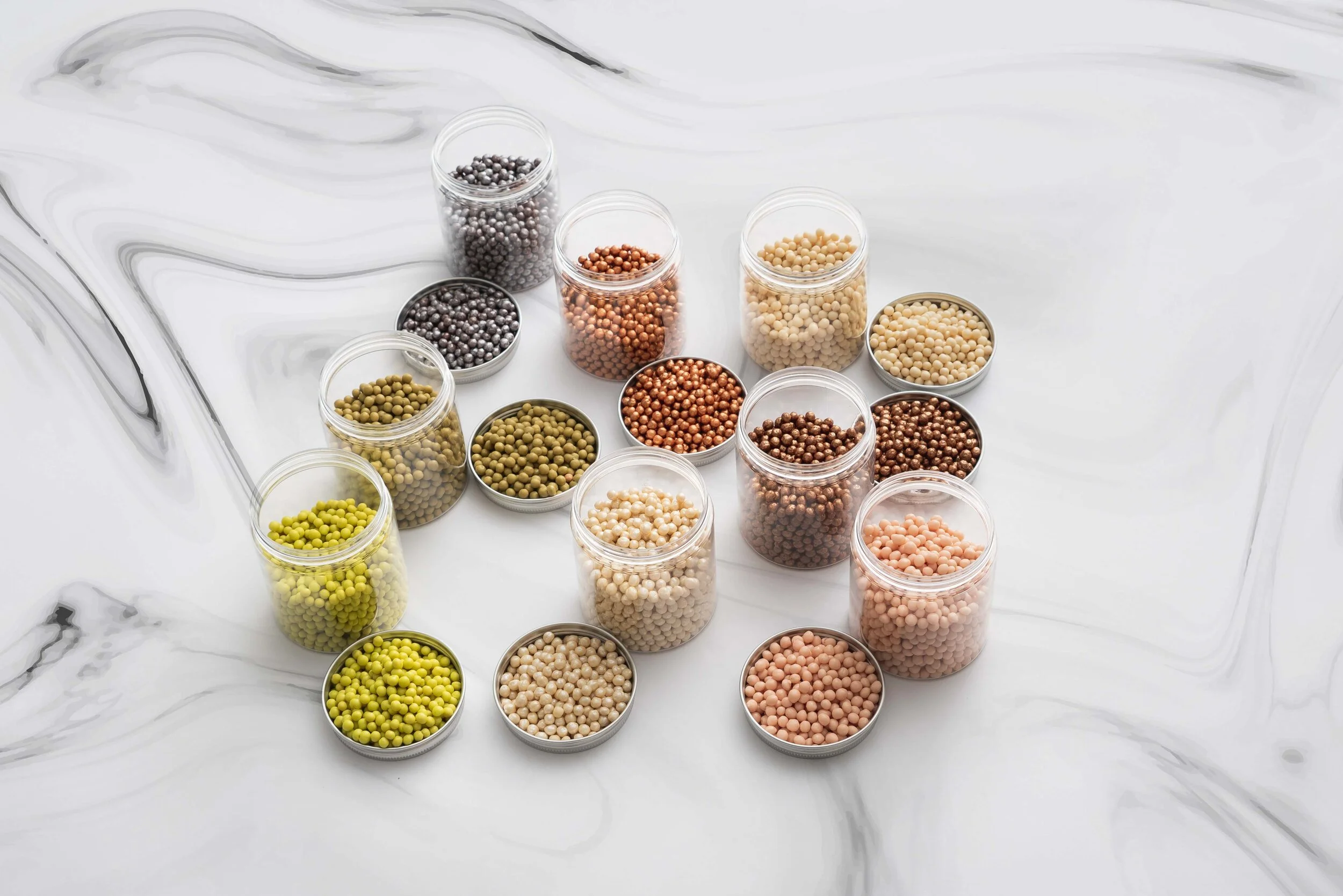I am fully on board with the slime trend. Slime is an easy way to add more sensory play to a child’s life. Sensory play—any kind of playful activity that engages the 5 senses—can be emotionally soothing and also helps children to develop and learn. I have to confess, though, that sometimes I get tired of slime. It is messy. It can be expensive. Sometimes you’ve got to take a break from burning through that much Elmer’s glue. If you (like me) occasionally feel a little “slimed out,” I hope some of these sensory play activities will be good alternatives to making slime.
Slime Alternative #1: Orbeez
What it is: Have you ever seen those little plastic pellets in potting soil? That’s what Orbeez are. These tiny spheres are made out of a plastic-like substance that absorbs many times its weight in water, turning into a squishy, jelly-like ball when hydrated. If you’ve ever had bubble tea, they look and feel similar to boba. They also remind me a little of fish eggs, which is kind of icky.
How to play with it: Kids love the squishy, wet texture of Orbeez, which have a similar sensory quality to slime. You can pour Orbeez into a big bin and play with them like you would a sandbox, using shovels, funnels, or other sand/water toys to move them around. Some kids love to submerge their hands or even their feet in Orbeez. We’ve also experimented in the play therapy office with making stress balls by funneling Orbeez into a balloon.
The pros: Unlike some slime recipes, Orbeez are nontoxic and biodegradable…but please do not test this by eating them! Because Orbeez are solid, they’re easier to clean up than slime, and less likely to get stuck on carpets or furniture.
The cons: Orbeez take a while to hydrate, so you can’t use them right away. Orbeez can be reused, but eventually they may stop rehydrating or become moldy, so eventually they need to be replaced.
Slime Alternative #2: Shaving Cream “Snow”
This “snow” is made by combining shaving cream with either baking soda or cornstarch to create a light, fluffy, snow-like mixture. It naturally feels cool to the touch, and can be packed and molded like the real thing. You can find a recipe here.
How to play with it: Kids may enjoy packing their “snow” into snowballs or making snowmen, especially if they live in a place where snow isn’t common. Children can also use miniatures in the snow for imaginative play. Sand and water tools could also be useful to dig and sift through the snow.
The pros: With only 2 ingredients, this is a much simpler recipe than slime. Because there’s no Borax, it’s less likely to irritate sensitive skin. Also, this white snow doesn’t require any food coloring, so there’s less risk of staining skin or clothing. I have found shaving cream is much easier to clean up than slime.
The cons: Not everyone is crazy about the scent of shaving cream. Although less likely to stain, you may still have some mess to deal with after playtime is over.
Slime Alternative #3: Dry beans, pasta, or rice
This one is an old favorite of occupational therapists, who often use play activities like this to help children with sensory processing issues. Dried beans, pasta, and rice can be a fun indoor alternative to a sandbox, particularly for younger children. You can buy these in bulk, and different types of beans will provide different color and textures, changing the sensory experience.
How to play: You can create a sort of indoor sandbox by pouring the dried item(s) of your choice into a large Tupperware container. Be sure to put a blanket or tarp underneath to catch any spills! Some kids enjoy hunting for “buried treasure” in the box, searching for small toys or plastic coins. Others might prefer to sort the items by color, which can also be a soothing activity. I’ve seen many kids try to climb in the box, which is a great sensory experience but has a higher risk for mess!
The pros: Because these items can be bought in bulk and last a long time, this is a cheap and effective option for sensory play. The dry ingredients won’t stain, but may need to be swept or vacuumed when playtime is over. Since all these items are food items, they aren’t likely to cause a problem if someone nibbles on one.
The cons: While they won’t mess up clothing or fabric, you probably will be left with some stray pieces to pick up or vacuum. This is a very different texture to slime, so it may not be quite as satisfying as a slime alternative for kids who want that squishy feeling.
More Sensory Play Alternatives to Slime
If you’re needing more ideas for slime alternatives, there are tons of sensory play suggestions online. Check out this site for more ideas for how to make a simple “bean box” fun and exciting for younger kids. This seasonal Christmas play-doh recipe is a little more labor-intensive, but also looks really fun for winter. To learn more about how play helps kids to develop learning and emotional skills, check out my play therapy page.
If you’re in the Davidson area, I’m always happy to chat more about the benefits of play therapy for kids. You can reach out to me here.





